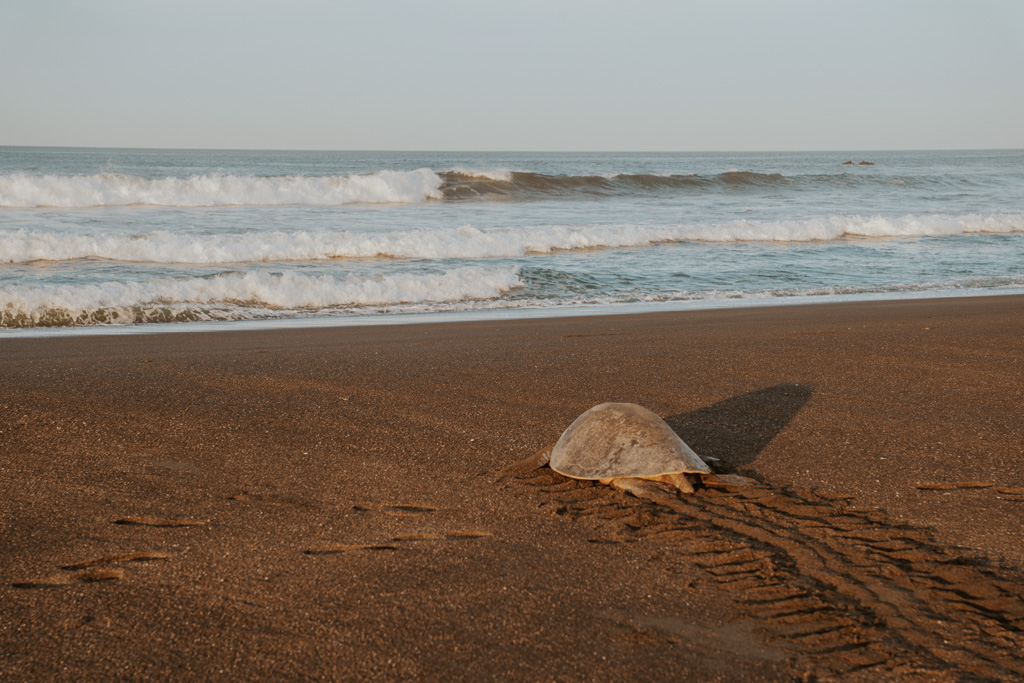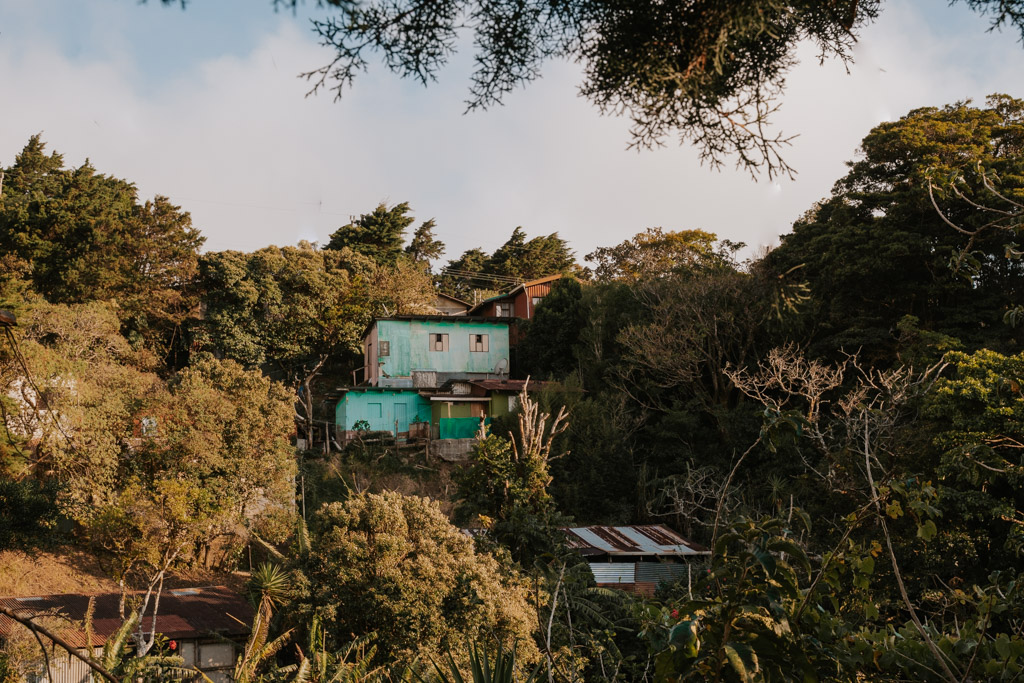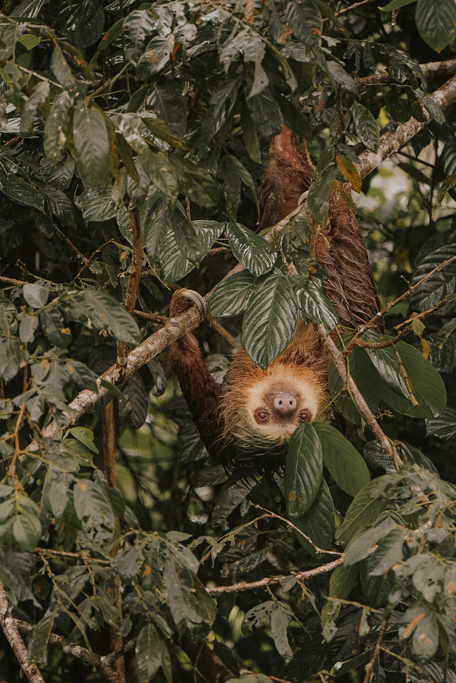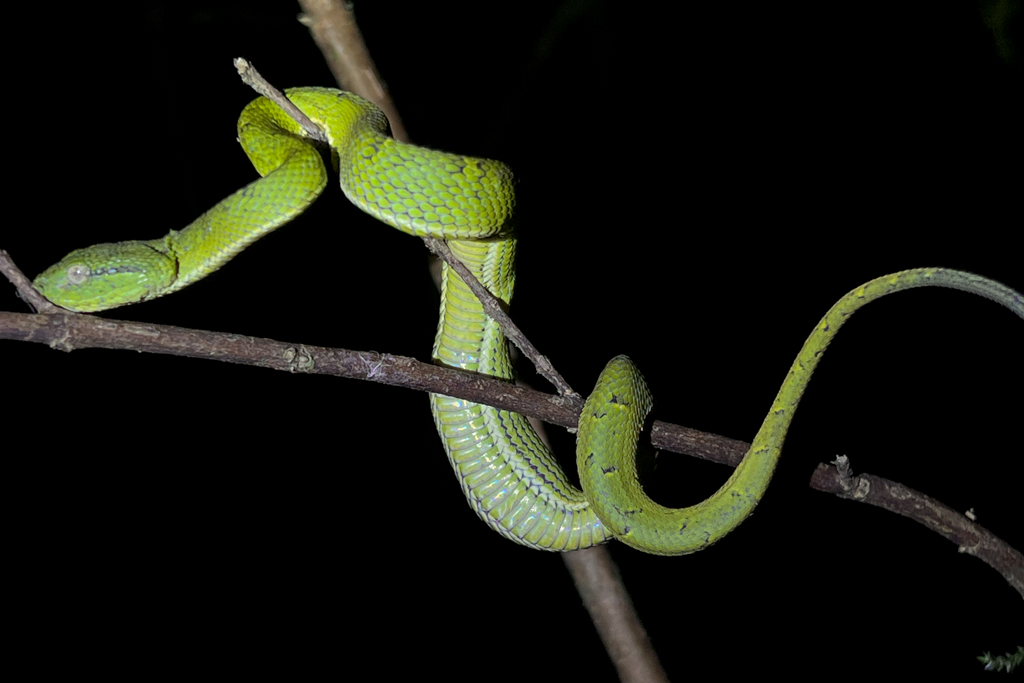Where is Costa Rica Located?

Wondering where is Costa Rica located? I’ve got you covered.
You’ve landed here because your adventurous spirit is steering you towards Costa Rica, a gem of Central America. But you might find yourself pondering, where is Costa Rica? Or better yet, where is Costa Rica located in this big beautiful world? Don’t worry, you’re in good hands!
Today, we’re journeying together to pinpoint exactly where Costa Rica sits on the world map.
Tucked neatly in the heart of Central America, sandwiched between Nicaragua to the north and Panama to the south, this vibrant nation has been making waves in the world of travel and eco-tourism.
After traveling for 2 months through much of Costa Rica’s beautiful landscapes, I can undoubtedly say the country is full of jaw-dropping volcanoes, untamed rainforests, and pristine beaches, and is one of my favorite countries in the world.
So, where is Costa Rica located on the map? Knowing the exact location of Costa Rica isn’t just a geography lesson, it’s the first step to understanding the country’s unique charm. Costa Rica’s coordinates place it in a biodiversity hotspot, with both Caribbean and Pacific coastlines and a tropical climate that makes it a paradise for nature lovers.
In this guide, we’ll not only demystify where Costa Rica is located but also shed light on how its location gives it its unique features. From its vibrant wildlife, and cultural richness, to its status as a beloved travel destination, Costa Rica’s geographical location is the beating heart that pumps life into all of its features.
So, grab a cup of Costa Rican coffee (yum!) and sit tight. We’re about to delve into the geographical nooks and crannies of Costa Rica, answering not only where is Costa Rica, but why its location matters so much, as well.
*This post may contain affiliate links, which means I may receive a commission, at no extra cost to you, if you make a purchase through a link. Please see my full disclosure for further information.
Where is Costa Rica Located on the Map?
You might have heard the saying that, in life, “It’s not about the destination, it’s about the journey.” But when it comes to travel, sometimes it really is about the destination – specifically, where that destination is located! So, where is Costa Rica in the context of the world?

Tucked between 8 and 12 degrees north of the Equator, Costa Rica sits comfortably in the tropics. This tropical placement – think warm weather, lush landscapes, and a predictable dance between a wet and dry season – allows the country to flourish with exotic biodiversity.
It’s as though Mother Nature herself positioned Costa Rica precisely where the conditions were perfect for life to explode in its most vibrant and colorful forms.
Costa Rica in the Americas
Costa Rica: The Heart of Central America
When you look at the Americas, stretching from the frost-kissed tips of Alaska in the north down to the icy wilderness of Tierra del Fuego in the south, right in the middle, you’ll find the slender yet vibrant region of Central America.
And there, comfortably nestled between Nicaragua to the north and Panama to the south, is our much-loved destination, Costa Rica.
A Bridge between Continents
Central America is essentially a natural bridge connecting North and South America, both geographically and culturally. And Costa Rica, with its vibrant mix of influences, perfectly epitomizes this bridge.
When I traveled through Costa Rica, I loved how it effortlessly blended elements from both its continental neighbors. Whether it’s in the cuisine, music, or the warm, friendly attitude of the people, you can feel the pulse of the Americas beating in the heart of Costa Rica.
Location of Costa Rica Perks
Being situated in Central America offers Costa Rica some unique geographical perks.
First off, it’s embraced by the Caribbean Sea to the east and the mighty Pacific Ocean to the west. This means that no matter where you are in Costa Rica, you’re never too far from a beach.
And that’s not all. Central America is also a seismic hotspot with several active volcanoes, and Costa Rica owns some of the region’s most spectacular ones. The first time I saw the Arenal Volcano (now dormant), standing majestically against the skyline, I was struck by the raw, awe-inspiring power of nature.
Costa Rica in 10 days is definitely manageable, but if you have more – the world’s your oyster!
Costa Rica’s Neighboring Countries
So, we’ve pinpointed Costa Rica’s location in Central America. Now, let’s meet its closest neighbors. To the north of Costa Rica lies Nicaragua, and to the south is Panama. While these countries are geographically close, they offer diverse contrasts in culture and landscapes.

Nicaragua: The Neighbor to the North
Let’s first turn our attention northward, to the land of lakes and volcanoes – Nicaragua. I remember crossing the border from Costa Rica into Nicaragua. What struck me most was how this beautiful country offers a slightly more rustic, off-the-beaten-path experience compared to Costa Rica.
Nicaragua is known for its stunning landscapes, especially its lakes and volcanoes, but also for its rich history and vibrant culture. And while it’s less developed in terms of tourism, it holds its unique charm that’s both refreshing and inviting. It’s like a sneak peek into what Costa Rica might have looked like before tourism boomed.
Panama: The Southern Neighbor
Now, let’s travel south to Panama, Costa Rica’s other neighboring country. Panama is famous for its canal, a marvel of engineering that connects the Atlantic and Pacific Oceans. But there’s more to Panama than just its canal. With its bustling cities, indigenous cultures, and diverse wildlife, Panama is like a condensed version of all the Americas.
My journey into Panama from Costa Rica felt like stepping into a different world. The skyline of Panama City, studded with high-rises, is a stark contrast to the largely rural and nature-focused landscapes of Costa Rica.
Yet, venture beyond the city, and you’ll discover that Panama shares the same rich biodiversity and passion for conservation as Costa Rica.
The Pura Vida Connection
Despite their differences, Nicaragua and Panama share a special connection with Costa Rica. Together, they form a vibrant trio that enriches Central America. As a travel writer, crossing borders in this region feels like reading different chapters of the same enthralling book.
So, when you wonder where is Costa Rica located, remember that it’s snugly sandwiched between two contrasting neighbors, each adding their unique flavor to the Central American mix. But wait, there’s still more to explore about Costa Rica’s location!
Provinces of Costa Rica
Now that we’ve got the lay of the land, it’s time to get to the real heart of the matter. Where is Costa Rica located? Right at the intersection of vibrant provinces, each with its unique personality and charm. Costa Rica is divided into seven provinces: San Jose, Alajuela, Heredia, Cartago, Puntarenas, Limon, and Guanacaste. Let’s take a quick tour!

San Jose: The Beating Heart
First up is San Jose, the capital city located in the province of the same name. As you might expect, it’s a bustling metropolis, full of life, culture, and a thriving food scene. I remember walking the colorful streets of San Jose, with the aroma of Costa Rican coffee wafting from the local cafes, and feeling the city’s pulse.
The historic neighborhoods, art galleries, and vibrant markets are a testament to the country’s rich heritage.
Alajuela: Home to the Majestic
Just northwest of San Jose is Alajuela, the largest of Costa Rica’s provinces. Here you’ll find the awe-inspiring Arenal Volcano, and trust me, the sight of this active volcano is something you won’t forget.
I still remember the chill I got seeing it up close, billowing smoke against the backdrop of the blue sky. It’s also not uncommon to have a spectacular view from your La Fortuna hotel. It’s a powerful reminder of the fiery force that shaped this beautiful country. Interested? Check out the top things to do in La Fortuna.
Don’t forget to make a trip to Monteverde for its stunning Monteverde Cloud Forest and unique Monteverde lodge hotels.
Puntarenas and Guanacaste: Beach Lovers’ Paradise
Now, if you’re a beach bum like me, you’ll fall head over heels for Puntarenas and Guanacaste. These western provinces are home to some of the country’s most stunning Pacific coastlines. In Guanacaste, the sunset over Playa Conchal is a must-see.
I particularly enjoyed my stay in the vibrant backpacker town of Santa Teresa, where I stayed for a month just 3 minutes off the beach in a great Santa Teresa apartment. There are also plenty of exciting things to do in Santa Teresa like surfing (perfect for beginners to intermediates), a day visit to Montezuma or a boat ride to Tortuga Island.
For something a little more upscale, head to Nosara, Costa Rica. You will find the Nosara accommodation a little more boujee and one heck of a consistent surf break.
Limon: Caribbean Charm
Last but not least, let’s venture over to Limon on the east coast, where the vibes change from Pacific chill to Caribbean cool.
With its laid-back lifestyle, Afro-Caribbean culture, and pristine beaches, Limon offers a different yet equally captivating side of Costa Rica. I still dream of the coconut-flavored dishes and reggae beats that fill the air in this part of the country.
So, when you’re asked, “where is Costa Rica located,” you can now confidently say, it’s not just in the heart of Central America, but it’s also where a mosaic of captivating provinces converge to form a vibrant, diverse, and unbelievably beautiful nation.

Why Costa Rica’s Geographical Location Matters
Understanding the geographical placement of this little Central American powerhouse is about so much more than just satisfying our curiosity. The location of Costa Rica is a key ingredient to the magic that makes this country an incredible place to visit and explore.
A Biodiversity Hotspot
Located in the tropics and kissed by the Caribbean Sea and the Pacific Ocean, this land is a paradise of biodiversity. The tropical climate and variety of altitudes – from sea level to towering volcanoes – have created a multitude of microclimates, each nurturing a unique ecosystem. Here you will find the cuddly cozy Sloth! (But don’t actually cuddle them).
I remember trekking through the Monteverde cloud forest marveling at how much diversity this small country packs!
Culture at the Crossroads
Costa Rica’s central position in the Americas has shaped its culture into a vibrant tapestry. This cultural melting pot, where North and South American influences mingle with indigenous traditions and European heritage, is evident in everything from the food to the music and festivals.
Whether you’re tasting the unique fusion flavors in local cuisine or swaying to the rhythm of Costa Rican music, the cultural richness is a reflection of its geographical placement.
The Pura Vida Lifestyle
The phrase ‘Pura Vida‘ – pure life – is the essence of Costa Rican life and is directly tied to the country’s geographic location.
With its abundant nature, favorable climate, and tranquil beaches, it’s no surprise that Costa Rica consistently ranks high on the world’s happiness index. This Pura Vida lifestyle is deeply ingrained in the country’s social fabric, and trust me, it’s contagious!
You can’t help but embrace the joy and simplicity of life when you’re here.

Costa Rica’s Seasons
When you’re planning a trip to the heart of Central America – to the land where the Pura Vida spirit thrives – it’s important to consider the country’s two main seasons.
Nestled between two oceans and located near the equator, Costa Rica experiences a tropical climate with a distinct wet season (also known as the ‘green season’) and a dry season. Let’s take a closer look at what each season has to offer.
Green Season (May to November)
The green season in Costa Rica spans from May to November.
This is when the landscapes truly live up to Costa Rica’s reputation as a lush, green paradise. You’ll see the rainforests in their full glory, waterfalls at their most powerful, and a countryside that’s a vibrant green.
Sure, you’ll encounter rain, usually in the form of afternoon showers, but don’t let that deter you. Mornings often remain clear and sunny, offering plenty of time for exploration.
Plus, the rain brings the advantage of fewer tourists and lower prices. I still remember my green season visit to Rio Celeste Waterfall – the misty rain added a magical touch to the already mystical forest.
Dry Season (December to April)
On the flip side, the dry season, spanning December to April, is when Costa Rica sees little to no rain, especially in the Pacific regions.
This is the peak tourist season, with lots of sunshine and blue skies, making it perfect for beachgoers and sun-seekers.
This was when I first surfed the waves of Guanacaste and hiked through the dry forests of Santa Rosa National Park. The weather was hot and dry, and the vibe was festive, with locals and tourists alike soaking up the sun and the Pura Vida lifestyle.
Do note though that because the region of Guanacaste gets really dry during this season, it’s not uncommon for roads to become quite dusty.
Costa Rica Year-Round
What’s fantastic about Costa Rica’s location is that there’s really no bad time to visit. Whether you choose the wet or dry season for your visit, Costa Rica is sure to dazzle you with its stunning biodiversity, vibrant culture, and warm hospitality.
Remember, though, that the country’s microclimates mean that weather can vary significantly from one region to another. So, wherever your Costa Rican adventure takes you, be prepared for a little bit of everything!

Costa Rica’s Daylight Hours
One of the aspects of Costa Rica that captured my heart was the consistency of daylight hours.
Thanks to its tropical location, the sun rises and sets at roughly the same time all year round. That’s around twelve hours of daylight to explore and soak in the country’s beauty, every single day.
There’s nothing quite like watching a sunrise in Costa Rica, with hues of gold and pink unfurling across the sky over breathtaking landscapes like the Tortuguero National Park. Believe me, when you’re there, you’ll cherish every extra minute of daylight this country enjoys!
Costa Rica’s Time Zone: Central Standard Time (GMT-6)
Costa Rica’s Location is Ideal for Stargazing
For all you night owls out there, Costa Rica’s location offers a unique stargazing experience. Positioned near the Equator, you’ll have the incredible opportunity to observe constellations of both the Northern and Southern hemispheres.
On my last trip to the Nicoya Peninsula, I had the opportunity to witness the Southern Cross, a constellation that’s typically out of view for those of us from northern latitudes. Lying under that starlit sky, you realize that the answer to where is Costa Rica extends far beyond its geographical coordinates.
Where is Costa Rica Conclusion
So there you have it, my fellow globetrotters! We’ve journeyed from the global coordinates down to the vibrant provinces to explore where Costa Rica is located. Tucked into the heart of Central America, kissed by both the Caribbean Sea and the Pacific Ocean, and nestled between contrasting neighbors, Costa Rica certainly occupies a prime slice of the globe.
This charming nation, located in the tropics, is so much more than just its physical location. It’s a biodiversity hotspot where life unfolds in its most vibrant forms. It’s a cultural crossroads where North meets South, and traditional meets contemporary. And above all, it’s the embodiment of the Pura Vida spirit, an ethos that permeates every aspect of life in Costa Rica.
So whether you’re planning your first Costa Rican adventure or reminiscing about past travels, I hope this deep dive into the location of Costa Rica has enriched your understanding and heightened your wanderlust.
More Costa Rica Travel Guides
10 Day Costa Rica Itinerary
Best Things to Do in La Fortuna
Best Hotels in La Fortuna
Best Things to Do in Monteverde
Best Hotels in Monteverde
Best Things to Do in Santa Teresa
Best Hotels in Santa Teresa
Nosara Travel Guide
Best Nosara Hotels






